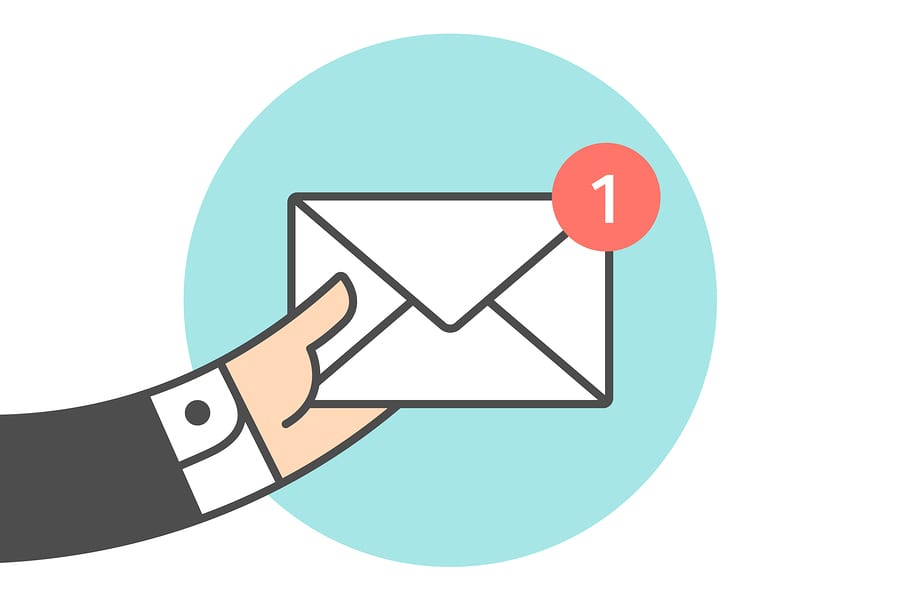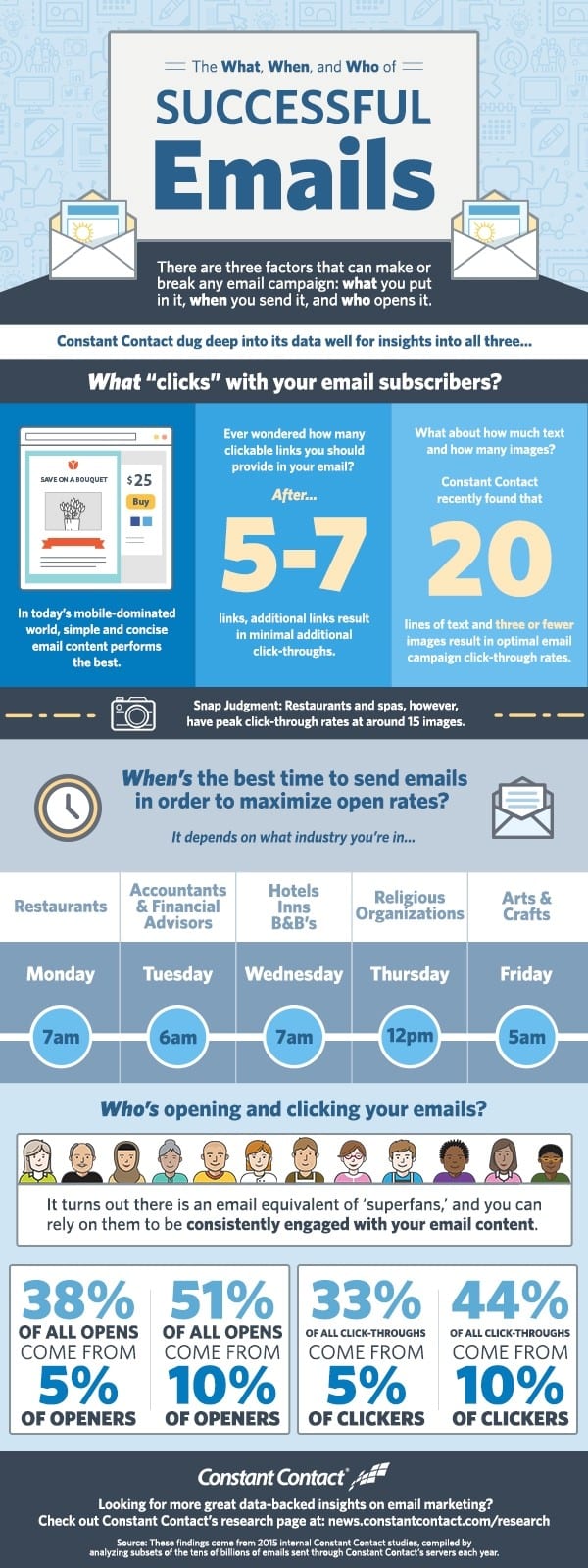20 Email Personalization Statistics That Will Help You Drive Sales

Brands are truly outdoing themselves when it comes to giving their customers full shopping experiences. From designing innovative unboxing processes to creating customized products, e-tailers have the customer in mind and craft personalized experiences for them.
This drive to inspire loyalty in customers, means that e-tailers are increasingly turning to personalization, especially in email. It’s no longer enough to send out a newsletter and hope that it draws people in. Research shows that each message a shopper receives has to be tailored to them in order to capture their attention.
These 20 email personalization statistics tell the complete story. Keep them in mind before hitting the “send” button.
1. Customer insights are at the top of the list
94% of customer insights and marketing professionals across multiple industries said personalization is “important,” “very important,” or “extremely important.” (Conversant)
Marketers recognize that personalization is vital to any campaign, but the same study found over half of respondents are running into problems with the implementation of their new proposed strategies.
According to Conversant:
- 66% describe a challenge in securing internal resources to execute personalized marketing programs.
- 65% face this degree of hurdles in building a comprehensive single view of each customer across all sales and marketing channels.
- 63% are concerned about data privacy.
2. Data open rates improve with personalization
The 2016 open rate for emails with a personalized message was 18.8%, as compared to 13.1% without any personalization. (Statista)
These may not be the most encouraging numbers, but it’s hardly surprising when there are 125 billion business emails sent and received every day. However, there is a clear advantage to personalizing the emails that your business sends out because they’re more likely to be opened.
3. Personalized emails get 26% more traction
Emails with personalized subject lines are 26% more likely to be opened. (Campaign Monitor)
Spam messages and impersonal emails are rampant in the inboxes of the average consumer, so it’s no wonder people don’t open up everything they receive. However, emails that are addressed directly to them are more likely to be of valuable.
A Statista report found an even higher number for personalized subject line opening rates, reporting that it is 30% higher than those without any personalization.
4. Click-through rates increase by at least 14%
Personalized email messages improve click-through rates by an average of 14% and conversions by 10%. (Reply.io)
Subject lines are not the only personalized part of an email that marketers can benefit from, according to research from Aberdeen. If the message has a personal angle, the recipient is more likely to follow the included links and purchase from the site they’re taken to.
Furthermore, Hatchbuck found that consumers who purchase products through email spend 138% more than those that don’t receive email offers.
5. Increases transaction rates and conversions six-fold
Personalized emails deliver 6x higher transaction rates. (Experian)
Research from Experian found an increase in emails with interactive nature, as well as a 107% increase in the use of pop-up windows by retailers to capture email addresses.
The study also found that:
- Personalized promotional mailings have 29% higher unique open rates and 41% higher unique click rates than non-personalized mailings.
- Personalized, triggered mailings have similar lifts, with 25% higher unique open rates and 51% higher unique click rates.
- Personalized, trigger campaigns result in more than double the transaction rates of non-personalized trigger mailings.
- Multichannel retailers see a 37% increase in unique open rates for emails with personalized subject lines when compared to emails sent during the same period with non-personalized subject lines.
6. 33% of marketers say email personalization is key
When asked to prioritize one capability that will be most important to marketing in the future, 33% of marketers answered: “personalization.” (Adobe)
One-third of marketers agree that the future of the industry is centered on personalization as consumers become inundated with promotional messages and are given a seemingly endless amount of choices.
With this massive shift in the marketing world, 64% of respondents expect their role will change in the next year, and 81% anticipate it will change in the next three years.
7. E-tailers are embracing email personalization
39% of online retailers send personalized product recommendations via email. (Certona)
If you’re not using a CRM tool to keep track of your customers and their order histories, product recommendations are admittedly difficult to completely personalize. With a tool like ReadyCloud, this task is easier because the software generates detail-rich customer profiles based on their purchase histories, which you can then tag for future marketing efforts like personalized emails.
It is beneficial to e-tailers to send these personalized product recommendations because shoppers are more likely to purchase when the products they want are right in front of them in the form of an email.
8. Targeted emails drive 58% of revenue
Segmented and targeted emails generate 58% of all revenue. (DMA)
Over half the revenue for online retailers comes from the conversions they see from personalized emails.
This study found 42% of email marketers have at least six categories for segmented email campaigns, which is more likely to target demographic portions accurately. As a result, those businesses will see greater revenue.
9. Interactions improve with personalization
50% of companies feel they can increase interaction within email by increasing personalization. (Experian)
Research from Experian shows half of companies have an idea for how to increase engagement from their customers.
The findings showed how emails encouraged interaction:
- Responsive design in email campaigns automatically adjusts to the recipient’s screen in order to deliver a seamless message across multiple devices.
- Social influence and brand advocacy are key components in emails, driving traffic to social profiles and chosen landing pages that add to a user’s multichannel experience with a brand.
10. Targeted personalization is the key to engagement
74% of marketers say targeted personalization increases customer engagement.
Recent reports have found that 71% of shoppers are frustrated with the lack of personalization in their shopping experiences, and they will not engage with a brand that causes them frustration.
Therefore, it’s imperative to your customer engagement rate to personalize outbound messages like emails. 44% of shoppers responded to a survey that they would become repeat buyers if they were
11. Revenue improves with email personalization
53% of marketers say ongoing, personalized communication with existing customers results in moderate to significant revenue impact. (DemandGen)
The engagement discussed above is crucial to developing relationships with consumers, who then become customers. Modern consumers desire relationships with brands before and during the shopping experience because they want to spend their money with a company they can trust.
12. Internal resources are incremental to success
66% of marketers are working toward securing internal resources to execute personalized marketing programs. (Conversant Media)
The main hurdles to increasing personalization efforts are funding and internal issues, such as with IT, but over half of marketers are dedicating themselves to implementing personalized experiences into their marketing strategies. These resources include necessary technology, new staff and labor hours.
13. Most shoppers want personalized emails from an e-tailer
54% of consumers expect to receive a personalized discount by email within 24 hours after identifying themselves to a brand. (Segment)
Retailers must act fast, according to findings from Segment. The report also stated 32% of consumers expect the personalized discount to arrive within the hour.
14. Segmented, targeted emails can deliver up to a 760% ROI
Marketers have noted a 760% increase in revenue from segmented campaigns. (Campaign Monitor)
The study found that email is 40 times more effective for acquiring customers than Facebook or Twitter, and segmented campaigns do even better.
Segmented campaigns are simply targeted to demographic groups in ways unique to the group interests; but research shows they are clearly effective.
15. Personalization can result in a 20% sales uplift
Marketers see an average increase of 20% in sales when using personalized experiences. (Monetate)
Respondents from in-house marketing teams reported a 19% uplift in sales, whereas agencies reported 21%.
16. Personalized videos improve click-throughs by 800%
Some brands have recorded an 800% improvement on click-through rates with a personalized video versus standard outbound email campaigns. (Marketing Land)
Video has taken the content world by storm in the last few years, so there is no wonder why combining it with personalization tactics is an effective method to capture consumers’ attention. It can positively impact open rates, click-through rates, conversion rates, lead generation and much more, per Marketing Land.
17. Personalized emails improve customer satisfaction
Email personalization results in a 56% increase in customer satisfaction (Adestra)
Whether this personalized email comes in the form of a welcome email with a unique discount code or is a “thank you” note for a recent purchase, it is likely to delight the recipient. The email is an acknowledgement, even if it is automated, because it mimics a human response to a shopper’s activity on your site.
18. Shoppers want personalized product suggestions in emails
80% of consumers like when retailers’ e-mails recommend products based on their previous purchases (Listrak)
If there is anything most online shoppers have in common, it is the desire for convenience in their shopping experiences. Receiving a curated list of products based on order history takes the work out of searching for products to purchase next, so it is natural that this convenient feature is popular amongst consumers.
Personalized product recommendations also spur 49% of consumers to purchase something they didn’t initially need.
19. Amazon gets 35% in conversions from email personalization
35% of Amazon’s consumer purchases come from their personalized recommendation (McKinsey)
One of the keys to Amazon’s success is its product recommendation engine, which shows shoppers their curated lists at multiple points during the customer journey. One of the places consumers consistently see these recommendations is at the bottom of emails from Amazon, which are based on browsing and order history.
Over one-third of purchases are made as a result of this engine, which proves its power as a personalization tool.
20. Recommendation engines drive over 50% of online purchases
54% of retailers reported recommendation engines as the key driver of average order value in customer purchase (Forrester)
Considering 40% of shoppers say they have purchased something more expensive than they had originally planned because their experience was personalized, this is no surprise.
Recommendation engines, such as those powering personalized emails, are powerful tools for increasing AOV. Whether this means recommending a more expensive product or cross-selling, statistics show it will encourage consumers to add to their carts.
And there you have it: making communications personalized is the key to improving click-throughs, conversions, brand awareness, loyalty, retention and ROI. Hopefully these statistics on email personalization can help you improve your outbound marketing campaigns exponentially.
Need even more tips? Check out this awesome infographic from our partner, Constant Contact. (Hint: ReadyCloud integrates with Constant Contact to give you powerful email marketing tools that drive more conversions from your loyal customers by using key data points from our CRM to make the most of your outbound messages.)

Share On:








